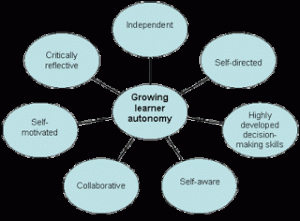Even though I may have come up with this question within the span of a few classes, I want to reinforce that the source or main idea of this question did not formulate out of thin air. There are some well documented cases of this predicament taking place, some of which I was able to experience myself while teaching at my practicum school.
I’ll start by quoting an article by Anderman and Anderman (2010) that states “teachers have to make daily decisions about the amount of autonomy that will be afforded to students” (pg. 111). Here we see how the allowance of autonomy is an ongoing debate within teacher’s classrooms day in and day out. Teachers struggle with the decision
 of how much autonomy is healthy enough for their class and as Anderman and Anderman (2010) explain
of how much autonomy is healthy enough for their class and as Anderman and Anderman (2010) explain
“the decisions that teachers make about autonomy can have profound influences on student’s learning and motivation” (pg. 111). So as you can see and as I have discussed before, this is a touchy subject when trying to design lesson plans, unit plans, and class activates. Not providing enough autonomy may limit the child’s opportunity for development, while too much may create a classroom full of chaos and distraction. The task gets even more difficult as Anderman and Anderman (2010) exclaim that teachers need to consider each student differently since their levels of autonomy should “differ for students at different ages and grade levels” (pg. 112).
It’s also documented that there can be cases of too much autonomy that students simply cannot handle. Some students are fine with being able to take a problem, figure it out and then run with it, others however need a little more scaffolding and guidance. Winters et al (2008) have found just that situation within a computer based learning environment. In this scenario, students were encouraged to use self-regulating learning strategies within their program of a computer based learning. What Winters et al (2008) found was that ” CBLEs (computer based learning environment) allow for a high degree of learner control opportunities for self-directed learning. However, empirical research has shown that students often struggle when using CBLEs” (pg. 430). Here we see that it is in fact possible for students to be overloaded with too many responsibilities or opportunities and as a result, their development is inhibited. In situations where “it is oftenup to the learners to determine which representations are the most helpful” (Winters et al, 2008), it can often become too much for the student to bare and begin to cause demotivation. Cleary and Zimmerman (2004) also share their concerns with the overuse in autonomy as it may cause “breakdowns in academic self-regulation such as lack of attention in class, failure to prepare for examinations, and even failure to attend school” (pg. 537).
Even in my own experiences I have seen students that are not able to reflect and think on their own, which would rather seek guidance than try to attempt solving the matter out on their own. These students are in need of scaffolding to help in the development of their own self- regulating and autonomous strategies.
Hopefully this has helped express where I am coming from with my question of inquiry. There is a definite need in the development of skill where teachers can identify the level of autonomy their students can handle. Imagine the time well spent when a teacher can spend time scaffolding the students that need it the most while allowing students that can self- regulate and cope with autonomy.
Photo Retrieved from:http://evelinojeda.blogspot.ca/2010/05/learner-and-teacher-autonomy.html







